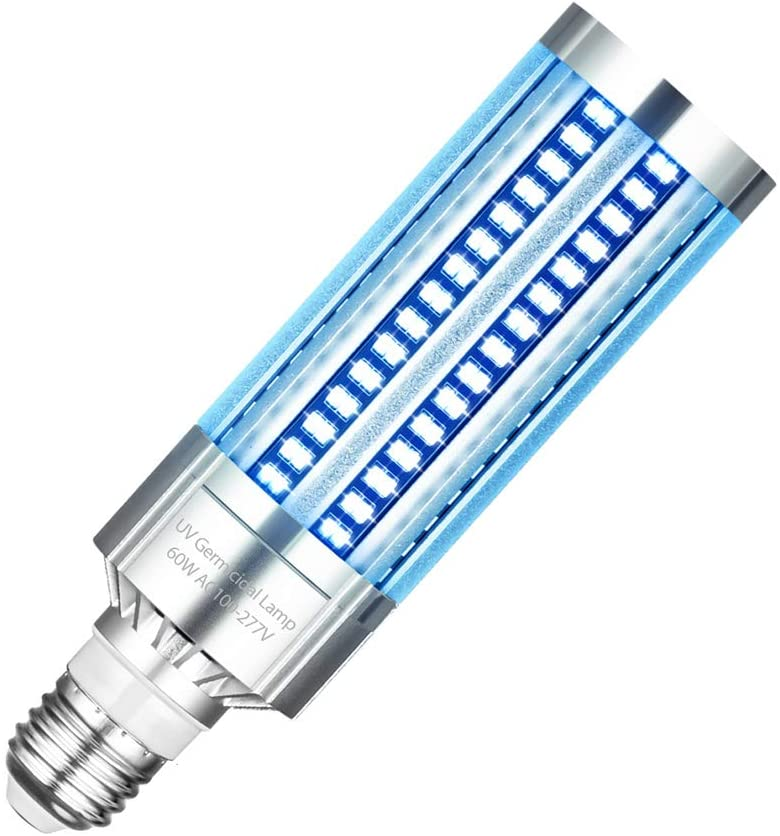
UVC Light Bulbs
What is the Difference between UVA UVB UVC? Which is Most Dangerous?
Ultraviolet (UV) light is a type of electromagnetic radiation emitted by the sun, and it plays a crucial role in our daily lives. However, it can also pose significant risks to our health. UV radiation is divided into three categories: UVA, UVB, UVC, each with different wavelengths and effects on the body. In this article, we’ll explore the differences between these three types of UV radiation, and discuss which is the most dangerous, as well as how UVC light is used in germicidal lighting products to eliminate pathogens.
Understanding UV Radiation: UVA, UVB, and UVC
Ultraviolet light bulbs are invisible to the human eye and are classified based on wavelength. The shorter the wavelength, the more harmful the radiation is to living organisms. UV rays are divided into three categories based on their wavelengths:
- UVA: With the longest wavelength, UVA rays account for the majority (approximately 95%) of UV radiation reaching the Earth’s surface. These rays penetrate deeply into the skin, reaching the dermis layer, and are primarily responsible for skin aging, wrinkles, and sunspots. They can also contribute to skin cancer.
- UVB: UVB rays have a shorter wavelength than UVA and are primarily responsible for causing sunburn. While UVB radiation is mostly absorbed by the Earth’s ozone layer, a small percentage (about 5%) still reaches the surface. UVB exposure damages the outer layer of the skin (epidermis), and long-term exposure is closely linked to skin cancer.
- UVC: The shortest wavelength and highest energy UV rays, UVC radiation is the most dangerous form of UV radiation. However, it is completely absorbed by the Earth's ozone layer and does not reach the surface. Despite this, UVC light is harnessed in artificial sources for various applications, such as germicidal UV-C lights used for disinfection.
UVC: The Most Dangerous UV Radiation
Although UVC light is the most harmful type of UV radiation, it poses little risk to humans under normal circumstances because it is absorbed by the ozone layer. UVC rays are effectively blocked by the Earth’s atmosphere, preventing them from reaching the skin and causing damage.
However, UVC lights are used in artificial products, and exposure to these man-made sources can be harmful. Common examples include germicidal UV-C lights, which are used to disinfect air and surfaces, and UV-C germicidal light bulbs found in medical and industrial settings. These devices can cause skin burns, eye injuries, and other health issues if used improperly. If we talk about UV light bulbs with UV rays, protective measures must be taken when working with UVC light bulbs or other artificial UVC lights to avoid harm.
UVB: The Sunburn Culprit
UVB radiation is the second most dangerous form of UV light. Although only a small fraction of UVB rays reaches the Earth’s surface, they are strong enough to cause sunburn and increase the risk of skin cancer. UVB rays primarily affect the outer layer of the skin, and prolonged exposure can lead to DNA damage, resulting in premature aging and a higher risk of skin cancer.

UVB rays vary in intensity depending on the time of day, season, and geographic location. The sun’s UVB rays are typically the strongest between 10 a.m. and 4 p.m. During these hours, it is crucial to take protective measures such as wearing sunscreen, protective clothing, and sunglasses. While UVB light is harmful, it also plays an important role in the production of vitamin D in the skin, which is essential for bone health. For those looking to boost their vitamin D levels, a vitamin D light bulb can be an alternative to sun exposure.
UVA: The Deep Penetrator
UVA rays, while less intense than UVB, are the most prevalent form of UV radiation reaching the Earth’s surface. UVA rays penetrate deeply into the skin, reaching the dermis, which is the thickest layer of skin. This is why UVA exposure is primarily responsible for skin aging, including wrinkles and sunspots. Although UVA rays are not directly associated with sunburn, they do contribute to skin cancer risk over time due to deep skin penetration.
UVA radiation can also penetrate glass, meaning you can be exposed to harmful rays while indoors, behind windows, or even while driving. This makes UVA light a particular concern for individuals who spend long periods inside or in vehicles without proper protection.
How to Protect Yourself from UV Radiation
Protecting your skin from harmful UV radiation is essential for maintaining long-term health. The best way to protect yourself from both UVA and UVB rays is by using broad-spectrum sunscreen that protects against both types of UV radiation. Additionally, wearing UPF-rated clothing, sunglasses with UV protection, and seeking shade during peak sunlight hours can help reduce your exposure.
For individuals working in environments where artificial UVC lamp bulbs are used, it’s important to wear protective gear such as goggles and gloves. UV-C lighting systems should be operated safely and according to guidelines to avoid accidental exposure to harmful UVC rays.
Which is the Most Dangerous UV Radiation?
The question of which type of UV radiation is the most dangerous doesn’t have a simple answer, as the level of danger depends on exposure and the specific circumstances. In terms of energy, UVC light is the most dangerous because of its short wavelength. However, since UVC lights are absorbed by the Earth’s ozone layer, they are not typically a risk to most people unless they come into contact with artificial sources of UVC radiation.
If we consider the risk of exposure, UVA is the most prevalent form of UV radiation that reaches the Earth’s surface, and it poses the greatest long-term threat. UVA rays penetrate deeply into the skin and are responsible for aging and increased skin cancer risk. That being said, UVB rays are the most dangerous in terms of direct skin damage, as they are closely linked to sunburn and have a higher correlation with skin cancer.
Artificial UVC: Sources and Risks
While the sun does not emit harmful levels of UVC radiation, artificial sources of UVC lights are widely used in various industries. Ultraviolet light bulbs are used for a range of purposes, including disinfection, medical applications, and even in some household products like air purifiers and water treatment systems. Some common sources of artificial UVC radiation include:
- Older tanning beds
- Welding torches
- Lasers
- UV-C germicidal lights
- Mercury vapor lamps
- Germicidal UV-C light bulbs
It’s essential to use these devices properly to prevent exposure to harmful UVC light. For instance, UVC LED bulbs used for sterilization should be installed in controlled environments, and safety precautions must be followed. With the rise of UV-C germicidal lights and UV-C LED bulbs, it’s more important than ever to understand the risks associated with UVC lights for home use and ensure that proper safety protocols are in place. For FAQs about UVC Light, you can learn more here.
Germicidal UV-C Lights: Safe Use and Benefits
Germicidal UV-C light bulbs are commonly used to disinfect air, water, and surfaces in environments like hospitals, laboratories, and commercial facilities. When used properly, these UVC lights for home or business use can kill up to 99.99% of pathogens, including viruses and bacteria, providing an effective way to prevent the spread of illness. To summarize, it's vital that you receive proper training and only use these products as directed.
While germicidal UV light bulbs are highly effective, it’s essential to operate them safely. UV ray light bulbs, UVC LED bulbs, and other germicidal lighting systems should only be used in unoccupied spaces to prevent exposure. Following the manufacturer’s instructions ensures that these devices are used safely and effectively without posing risks to human health. Germicidal lighting (ex. UVGI light) can be an amazing tool to curb infection and virus rates in many applications. Read about all of them on our education page all about UV-C. Consider using these lighting:
- In hospitals and other medical settings to curb HAI rates as well as COVID-19
- In gyms and fitness centers to keep STAPH infections at bay
- In school settings to protect teachers and students from the annual flu
- More ideas here
The bottom line: Use caution. UV rays of all kinds carry risks and benefits.









